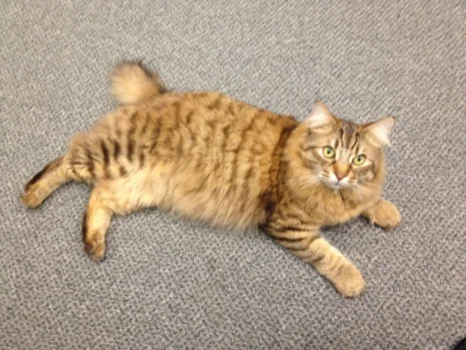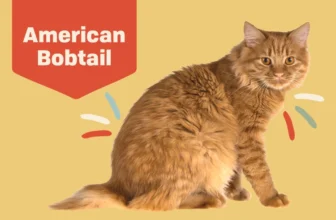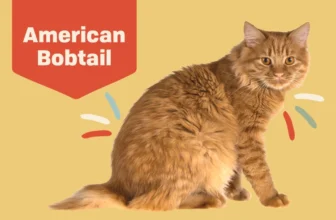It’s no secret that cats are fascinating creatures in their own right, but there’s something particularly enchanting about the American Bobtail breed. One of the most unique features of this breed is its thick, impressive tail, which sets it apart from other feline counterparts. But what makes this trait so significant? In this article, we’ll delve into the history of the American Bobtail breed, explore the benefits of their thick tails, discuss common tail-related conditions, and share tips on how to properly care for this distinctive feature. Get ready to learn all about why the thick tail is such an important aspect of the American Bobtail breed.
History of the American Bobtail Breed
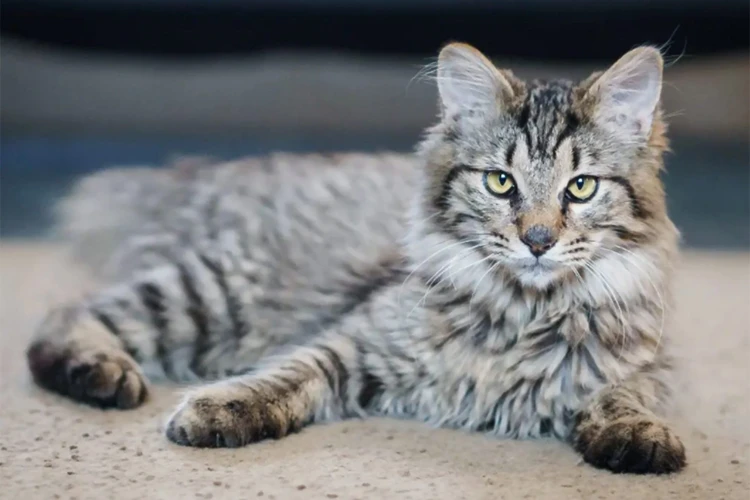
One cannot fully comprehend the modern American Bobtail breed without looking back into its roots. The history of this unique feline breed is a tapestry of different stories woven together, resulting in the beautiful and resilient breed we know and love today. From its origins to breed recognition, exploring the history of the American Bobtail is a fascinating journey that sheds light on the breed’s remarkable characteristics. Understanding the history of the American Bobtail breed is also crucial in identifying the crucial role that thick tails play in their lives.
Origins of the Breed
The origins of the American Bobtail breed are somewhat mysterious, with no one breed being named as the predominant ancestor. However, the breed is believed to have originated from a natural genetic mutation that produced a short-tailed cat in a litter of a non-purebred cat. The resulting kitten was crossed with a number of breeds including the Siamese, Himalayan, and Burmese. The new breed was then cross-bred with the American Shorthair to create a breed that is much loved for its unique look.
The American Bobtail breed’s short tail sets it apart from other felines and has become a significant identifying characteristic of the breed. Despite its mysterious origins, the breed has grown in popularity in recent years partly because of its striking looks, friendly disposition, and intelligence.
If you want to learn more about the structure and proportion of the American Bobtail breed’s body, check out these relevant links:
- Understanding the Bone Structure of the American Bobtail
- The Muscles of the American Bobtail
- The Body Length of the American Bobtail
- Body Proportions of the American Bobtail
Understanding the body structure of the American Bobtail can be helpful in caring for the breed and understanding its characteristics. The American Bobtail’s short, stubby tail is not the only unique feature of its body and learning about its proportions and bone and muscle structure can help you better understand and appreciate this fascinating breed.
Breed Recognition
The American Bobtail is a relatively new breed that has gained significant recognition in a short period of time. The breed has been recognized by several major cat organizations including The International Cat Association (TICA) and the Cat Fanciers’ Association (CFA). The TICA recognized the American Bobtail as an experimental breed in 1989, and it was later granted championship status in 2002. The CFA followed suit and recognized the breed in 2000.
Recognition from these major organizations is significant for the breed and its owners. It provides a sense of legitimacy to the breed and validates its unique characteristics. It also ensures that the breed’s standards are maintained, and that breeders adhere to specific guidelines when breeding and exhibiting cats.
In addition to recognition from major cat organizations, the American Bobtail has also gained popularity among cat lovers worldwide. The breed’s unique appearance and playful temperament make it an ideal pet for families or individuals seeking an affectionate and playful companion. The breed’s thick, muscular tail is a distinguishing feature that sets it apart from other cat breeds.
Below is a list of organizations that recognize and promote the American Bobtail breed:
- The International Cat Association (TICA)
- The Cat Fanciers’ Association (CFA)
- American Cat Fanciers Association (ACFA)
- Canadian Cat Association (CCA)
- United Feline Organization (UFO)
Recognition from these organizations has helped to increase the breed’s popularity and promote responsible breeding practices. It also helps to raise awareness about the breed and educate potential owners about the breed’s specific needs and characteristics. The recognition of the American Bobtail breed has been a positive development for the breed and its owners, cementing its place as a unique and beloved feline companion.
The Significance of Thick Tail in American Bobtail

Looking at the American Bobtail breed, one cannot simply ignore the importance of their thick tails. But why is it so significant? What makes it stand out from other feline breeds? Let’s explore the physical, behavioral, and communication benefits that a thick tail provides to the American Bobtail, making it an essential characteristic that sets this breed apart.
Physical Benefits
The thick tail of the American Bobtail is not just an attractive feature. It actually provides several physical benefits to the breed. Here are some of the advantages:
- Better Balance: The tail of the American Bobtail contributes to its remarkable balance. The thick tail serves as a counterbalance to the weight of the cat’s body, enabling it to maintain its equilibrium even on the most uneven surfaces. This is important for hunting and exploring in the wild, as well as for general movement and play.
- Enhanced Strength: The muscles in the cat’s tail are powerful, proportionate to the size and weight of its body. This adds to the feline’s overall strength and agility. In fact, the tail can be used as a weapon, as the cat can whip it around to strike an attacker, or to fend off prey.
- Protection from Cold: The thick tail of the American Bobtail also helps to protect it from cold weather. When the cat is curled up to sleep, its tail can be used to cover its nose and face, keeping it warm and cozy in colder climates.
- Improves Circulation: Believe it or not, the tail can also help the cat regulate its internal temperature by improving circulation. When the cat is overheated, it can move its tail rapidly to increase blood flow to the rest of its body, effectively cooling itself down.
These physical advantages make the American Bobtail an exceptional hunter and survivor. Its thick tail is not just a pretty feature, but a key aspect of its physical prowess. As such, it is essential to take proper care of the cat’s tail to ensure that it remains healthy and functional.
Behavioral Benefits
The thick tail of the American Bobtail breed does not only provide physical benefits, but also behavioral benefits that are significant for their overall well-being. Here are some of the behavioral benefits that a thick tail provides to American Bobtails:
| Benefit | Description |
|---|---|
| Balance | The thick and muscular tail of American Bobtails helps them achieve a better balance especially when they are running, climbing, or jumping. They use their tail as a counterbalance to keep them stable, so they can land on their feet safely. |
| Confidence | A thick and strong tail is not just for balance, but it also gives American Bobtails a sense of confidence. They can use their tail to signal their dominance or to show their emotional state. A cat with a weak, fragile tail might appear insecure and vulnerable. |
| Expression | American Bobtails are expressive creatures, and their tail plays a big role in relaying their emotions. A thick tail enables them to communicate better with their owners or with other cats. They can use their tail to greet someone, to show affection, or to express annoyance. |
| Playfulness | American Bobtails are playful cats, and their thick tail adds to their fun-loving nature. They love to play games that involve chasing or swatting their tail. Their tail also serves as a toy that they can play with when they are bored. |
The behavioral benefits of a thick tail for American Bobtails are significant. It enables them to balance better, to express themselves more effectively, to play more happily, and to be more confident in their daily activities. Owners of American Bobtails should pay attention to their tail and treat it with care to ensure that their cats can enjoy these benefits for a long time.
Communication Benefits
The American Bobtail breed is known for its thick and expressive tail, which serves a multitude of purposes, including communication. Here are some of the ways thick tails benefit communication in American Bobtails:
- Body Language: The American Bobtail is a breed that has a lot to say, and its tail is its primary tool for communication. The bobtail uses its tail to express happiness, anger, and other emotions. When a bobtail is happy or excited, it will hold its tail up high and wave it back and forth. When it is angry or defensive, it will puff its tail up to make itself appear larger.
- Expressive Gestures: The American Bobtail’s thick tail is also used to communicate in more subtle ways. For instance, the bobtail may twitch its tail tip when it is curious or unsure, or flick its tail rapidly when it is annoyed. Owners who pay close attention to their bobtail’s tail movements can often tell what their cat is thinking without the need for vocalization.
- Social Signaling: The American Bobtail also uses its tail to communicate with other cats. When meeting a new feline friend, the bobtail will often approach with its tail held high, indicating that it is friendly and non-threatening. Conversely, when encountering a potential threat, the bobtail will puff its tail up and hiss, sending a clear message to its adversary to back off.
In addition to these communication benefits, the bobtail’s tail serves as an important tool for balance and coordination. All in all, the thick tail is a defining characteristic of the American Bobtail breed, and an essential part of its communication and mobility. As such, it is important for owners to take proper care of their bobtail’s tail to ensure it stays healthy and happy.
Common Conditions Affecting American Bobtail Tail
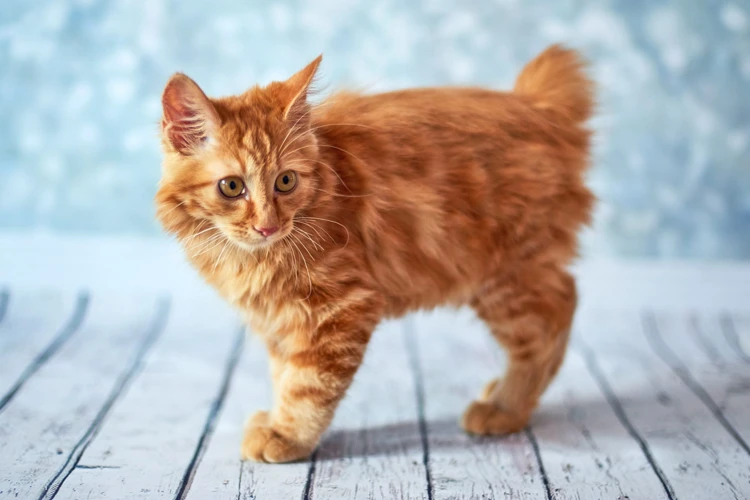
The American Bobtail breed is generally well-known for its robust stature and unique features, particularly its thick tail. However, despite its overall good health, American Bobtail cats can still be prone to certain conditions that affect their tails. These conditions, although not common, can cause severe distress and discomfort for the cat. In this section, we will explore some of the possible conditions that can affect the American Bobtail tail and what steps can be taken to prevent them. So, let’s dive in and learn more about how to keep your American Bobtail cat’s tail healthy and happy.
Manx Syndrome
One of the most common conditions affecting the American Bobtail breed’s tail is Manx Syndrome, a genetic disorder that affects the spine. This condition is caused by a mutation in the same gene that causes the breed’s naturally bobbed tail.
The Symptoms of Manx Syndrome
The symptoms of Manx Syndrome can vary in severity, depending on the cat’s degree of spondylosis. Some of the most common symptoms include:
| Symptom | Description |
|---|---|
| Sensory deficits | The cat’s ability to perceive touch, pain or temperature can be impaired, leading to coordination problems or lack of bladder and bowel control. |
| Paralysis | Severe cases of Manx Syndrome can lead to paralysis of the cat’s hind legs, which can interfere with its quality of life. |
| Spinal curvature | Another symptom of Manx Syndrome is the curvature of the spine, which can lead to chronic pain and mobility issues in cats. |
| Weakness and fatigue | The affected cat may experience weakness, fatigue or lethargy due to the spinal cord compression. |
The Causes of Manx Syndrome
As mentioned earlier, Manx Syndrome is caused by a genetic mutation in the breed. The mutation responsible for the breed’s bobtail is also linked to the development of spinal cord defects in some cats.
The condition can occur when two cats carrying the gene for bobtail breeding are mated, which increases the likelihood of offspring inheriting two mutated copies of the gene.
Treatment and Management of Manx Syndrome
Unfortunately, there is no cure for Manx Syndrome, and affected cats must learn to adjust to their physical limitations. However, there are a few things that pet owners can do to help their cats manage the condition:
– Work with a veterinarian to develop a pain management plan that can help reduce discomfort.
– Provide their cats with a comfortable and supportive bed to alleviate pressure on the spine.
– Encourage their cats to remain active with proper exercises to strengthen their muscles and improve mobility.
In severe cases, pet owners may be required to explore surgery as an option for their cat.
Spina Bifida
Spina bifida is a congenital condition that can affect American Bobtails. It is a neural tube defect that occurs when the spinal cord and backbone do not form properly. This can result in nerve damage, paralysis, or loss of bladder and bowel control.
Symptoms of spina bifida
- Visible sac-like protrusion on the lower back
- Weakness or paralysis in the legs
- Difficulty with bladder or bowel function
- Scoliosis or other spinal deformities
- Hydrocephalus (accumulation of fluid in the brain)
Causes of spina bifida
The exact cause of spina bifida is unknown, but it is believed to be a combination of genetic and environmental factors. Certain medications, obesity, and poorly controlled diabetes during pregnancy may increase the risk of spina bifida.
Treatment for spina bifida
There is no cure for spina bifida, but it can be managed through surgery and other treatments. Surgery is usually performed shortly after birth to close the opening in the spine and prevent further nerve damage. Physical therapy and other supportive measures can help manage symptoms and improve quality of life.
Prevention of spina bifida
Spina bifida is preventable in some cases. Women who are planning to become pregnant should take folic acid supplements and maintain a healthy diet. It is also important to avoid certain medications and substances that may increase the risk of spina bifida. Early prenatal care and screening can identify spina bifida early on and allow for early treatment and management.
Injuries and Trauma
The American Bobtail breed’s thick tail is one of its defining characteristics, but unfortunately, it can also make them susceptible to injuries and trauma. Their tail can get stuck in doors, accidentally stepped on, or caught in machinery. It’s important for pet owners to be aware of these types of accidents and how to prevent them.
Injuries and Trauma
Injuries and trauma to an American Bobtail’s tail can cause both physical and emotional pain. The tail serves as an extension of the spine, housing several key nerves. If these nerves are damaged, it can result in paralysis or loss of feeling in the tail. Common injuries include broken tailbones, dislocations, abrasions, and lacerations.
Prevention is key to avoiding these injuries. It’s crucial to supervise your pet around machinery, doors, and other potential hazards that could cause harm or get their tail caught. Regular check-ups with a veterinarian can also help identify any underlying medical conditions that could affect the tail.
In the event of an injury, it’s essential to seek prompt medical treatment. Delaying treatment can worsen the injury and lead to further complications. Treatment options may include pain management, bandages, or in severe cases, surgery.
It’s also essential to manage your pet’s emotional well-being after an injury. They may be frightened or in pain, requiring extra love and attention. Limiting their activity and providing a safe, comfortable environment can also aid in their recovery.
Injuries and trauma to an American Bobtail’s tail can be distressing for both pet and owner. By taking precautions, seeking prompt treatment, and providing emotional support, a full recovery can be achieved.
Proper Care for American Bobtail Tail
The American Bobtail breed is unique in many ways, one of which is their thick and expressive tails. As an owner of this breed, it is important to understand that their tails require proper care and attention to maintain their health and appearance. In this section, we will delve into the different ways in which you can ensure the optimal health of your American Bobtail’s tail through grooming and exercise, among other things. Let’s take a closer look.
Grooming and Hygiene
Maintaining proper grooming and hygiene for the American Bobtail’s thick tail is crucial for their overall health and well-being. Here are some tips to properly care for their thick tails:
| Tail Washing: | Regular tail washings can prevent the growth of bacteria and other germs. Use a mild pet shampoo and lukewarm water when washing the tail. Avoid using hot water or harsh shampoos, as this can cause irritation or dryness on the skin. |
|---|---|
| Brushing: | Regularly brushing the tail helps remove any tangles, mats, or debris that may cause discomfort to the cat. Use a soft-bristled brush and gently comb the tail from base to tip. This will also help distribute the natural oils on the skin, achieving a healthy and shiny coat. |
| Drying: | After washing or bathing, gently towel-dry the tail. Avoid using a hair dryer, as the heat can damage the skin and hair follicles. Allow the tail to air dry or use a fan to speed up the drying process. |
| Trimming: | Trimming the tail hair can help prevent mats and tangles. Use a pair of scissors with blunt tips to carefully trim the hair, avoiding any contact with the skin or tail bone. Professional grooming services can also assist with tail trimming if the cat is not comfortable with the process. |
| Injury Care: | In case of an injury or wound in the tail, seek veterinary care immediately. Cleaning the wound and applying antibiotic ointment can help prevent infections. It’s important to keep the cat from biting or licking the wound, as this can further irritate the injury and cause complications. |
Regular grooming and hygiene practices can help maintain the health and appearance of the American Bobtail’s thick tail. By implementing these tips, cat owners can ensure a happy and healthy cat.
Exercises and Activities
Keeping an American Bobtail’s tail healthy and strong requires more than just grooming and hygiene. It is essential to engage your furry feline in various exercises and activities to maintain their physical abilities and prevent any tail-related injuries.
1. Encourage Physical Activities: American Bobtails love to play and explore their surroundings. Encourage your cat to engage in various physical activities, such as running, climbing, and jumping. Prepare obstacle courses for them to jump over or crawl under using boxes, pillows, and toys.
2. Interactive Toys: Provide your American Bobtail with interactive toys that stimulate their curiosity and entice them to play. Toys such as feathered wands, laser toys, and puzzle toys, among others, will keep your furry companion engaged and active.
3. Leash Training: Leash training your American Bobtail will allow you to take them for walks and help them explore the outdoor world in a safe and controlled environment. Start slowly by introducing them to a harness and leash, then take short walks outside, allowing them to adjust to their new surroundings.
4. Agility Training: Agility training is an excellent way to keep your American Bobtail’s physical abilities in check. Create an agility course in your backyard using hurdles, tunnels, and ramps. This activity improves muscular strength, promotes flexibility, and enhances coordination.
5. Extend Playtime: American Bobtails love to play, and it is essential to dedicate time to play with your cat. Try to extend playtime by a few minutes each day, engaging them in interactive games such as hide-and-seek or tag.
Incorporating these exercises and activities into your American Bobtail’s daily routine will go a long way in maintaining their tail’s health and keeping them happy and active. Remember to start slowly and allow your cat sufficient time to adjust to the new activities introduced.
Conclusion
As we conclude our discussion on why the thick tail is significant in the American Bobtail breed, it’s clear that this breed wouldn’t be the same without its unique feature. The thick tail of the American Bobtail is not only beautiful, but it also has numerous physical, behavioral, and communication benefits that are essential to the breed.
From a physical standpoint, the thick tail serves many purposes. It helps the American Bobtail maintain its balance and jump with accuracy, which is necessary for hunting and survival in the wild. Additionally, the thick tail can provide warmth and cushioning for the cat, making it more comfortable in a range of settings.
The behavioral benefits of the thick tail also cannot be overstated. The tail is an important part of the language and communication of the American Bobtail, allowing it to communicate its mood and intentions to other cats and even humans. It’s also useful in play, serving as a tool for the American Bobtail to interact with its surroundings and fellow cats.
Unfortunately, the American Bobtail tail is susceptible to certain conditions and injuries. In some cases, these conditions can be serious and require immediate medical attention. As responsible pet owners, it’s critical to monitor your cat’s tail for any signs of injury or discomfort and to seek veterinary treatment when necessary.
To properly care for your American Bobtail’s tail, it’s important to prioritize grooming and hygiene. Regular grooming sessions can help prevent matting and keep the tail looking and feeling healthy. Additionally, incorporating exercises and activities that allow your American Bobtail to use its tail can help keep it in top form.
In conclusion, the American Bobtail’s thick tail is an essential part of the breed. With its numerous physical, behavioral, and communication benefits, the tail is a defining characteristic of this unique and beloved feline. By understanding the importance of the tail and taking the necessary steps to care for it properly, you can ensure that your American Bobtail remains happy, healthy, and full of life.
Frequently Asked Questions
1) Can American Bobtail cats have a thin tail?
Although American Bobtails often have a thicker tail, it is not a requirement of the breed standard. They can have tails of varying sizes and thicknesses.
2) How long is an American Bobtail’s tail?
An American Bobtail’s tail can range from 1-4 inches in length, but it is typically around 2-3 inches.
3) Are American Bobtails prone to tail injuries?
Like any cat, American Bobtails can experience tail injuries. However, their thick tail can offer them some extra protection.
4) Do American Bobtails use their tails to communicate?
Yes, American Bobtails are known to use their tails as a form of communication. They may twitch their tail in excitement or wag it when they are happy.
5) How often should I groom my American Bobtail’s tail?
It is recommended to groom an American Bobtail’s tail at least once a week to prevent mats and tangles from forming.
6) Can American Bobtails develop Manx Syndrome?
While American Bobtails are not the same breed as the Manx cat, they do share some genetic similarities. They may be at risk for developing some similar conditions, such as Manx Syndrome.
7) Is it important to exercise my American Bobtail’s tail?
American Bobtails are an active and playful breed, and they may enjoy interactive toys that can help them exercise their tail muscles. However, it is not a necessary part of their care routine.
8) Are American Bobtails more vocal than other cats?
While some individual American Bobtails may be more vocal than others, the breed as a whole is not known for being particularly talkative.
9) Can American Bobtails have problems with their tail if it is too thick?
While a thick tail may offer some protection, an excessively thick tail could potentially cause problems if it leads to difficulty with mobility or balance.
10) Are American Bobtails good with children?
American Bobtails are often described as social and affectionate cats who can make great family pets. However, like with any pet, it is important to supervise interactions between children and cats to prevent any accidental harm or injury.

